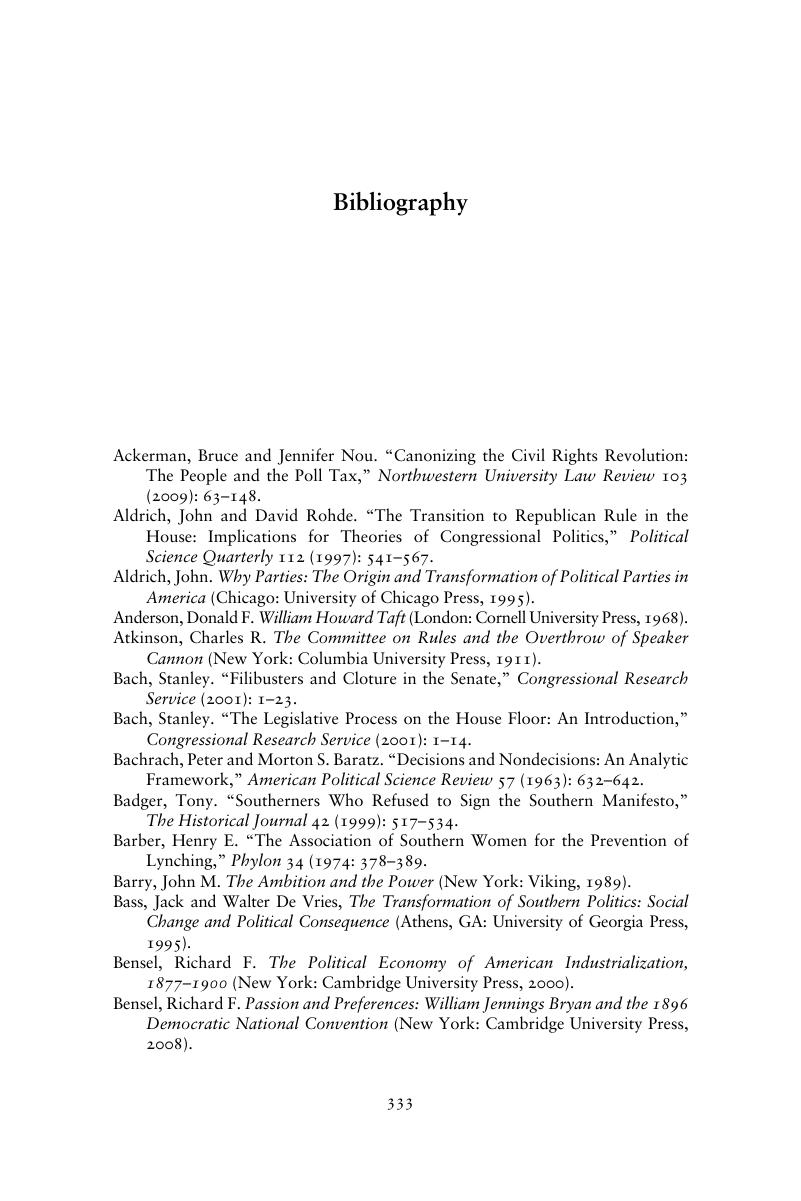Book contents
- Building the Bloc
- Building the Bloc
- Copyright page
- Dedication
- Contents
- Figures and Tables
- Acknowledgments
- 1 Intraparty Organization in the U.S. Congress
- 2 Procedural Revolt and the House Insurgency, 1908–1910
- 3 The Senate Insurgency’s Quest for Economic Reform, 1909–1910
- 4 Securing Southern Solidarity, 1937–1956
- 5 The Decline of Southern Influence, 1957–1964
- 6 Making the Moderates Matter, 1994–2010
- 7 Coordinating Liberal Hardliners, 1957–1994
- 8 Organizing Conservative Revolutionaries, 1970–2015
- 9 Rethinking the Mischiefs of Faction
- Appendices
- Bibliography
- Index
- References
Bibliography
Published online by Cambridge University Press: 05 September 2017
- Building the Bloc
- Building the Bloc
- Copyright page
- Dedication
- Contents
- Figures and Tables
- Acknowledgments
- 1 Intraparty Organization in the U.S. Congress
- 2 Procedural Revolt and the House Insurgency, 1908–1910
- 3 The Senate Insurgency’s Quest for Economic Reform, 1909–1910
- 4 Securing Southern Solidarity, 1937–1956
- 5 The Decline of Southern Influence, 1957–1964
- 6 Making the Moderates Matter, 1994–2010
- 7 Coordinating Liberal Hardliners, 1957–1994
- 8 Organizing Conservative Revolutionaries, 1970–2015
- 9 Rethinking the Mischiefs of Faction
- Appendices
- Bibliography
- Index
- References
Summary

- Type
- Chapter
- Information
- Building the BlocIntraparty Organization in the US Congress, pp. 333 - 342Publisher: Cambridge University PressPrint publication year: 2017



